Source: Liu Jiaolian
Qinghai has long clouds and dark snow-capped mountains, and the isolated city looks at Yumen Pass in the distance.
When Bitcoin is hovering below the previous high of 69k in 2021, the market is obviously divided on the long and short market outlook.
When the so-called BRC-20 inscription meme coin was popular in the Bitcoin ecosystem last year, an OG (old gun) developer jumped out and, with the fearless spirit of killing thousands of people, fought with the The splendid fireworks of "Bitcoin Ecology" aroused the enthusiasm of the whole community, and they shouted: ordinal is a scam, and inscription is an attack on the Bitcoin main chain. The Bitcoin client should be upgraded to filter these Junk data!
The man who tried to single-handedly put a final word on the inscription fanaticism is called Luke Dashjr. Whether you say he doesn’t overestimate his own capabilities or that he doesn’t understand current affairs, you have to admit that Bitcoin has gone through many hardships and passed through many life and death hurdles. From being worthless in 2009, it has gone all the way to nearly 7 in March 2024. Ten thousand dollars, at every fork in history, we are extremely lucky to choose the right path. Since its birth, starting from the founder Satoshi Nakamoto, generations of key developers have adhered to the original intention, persevered, and were not afraid of challenges. Their efforts and protection are inseparable.
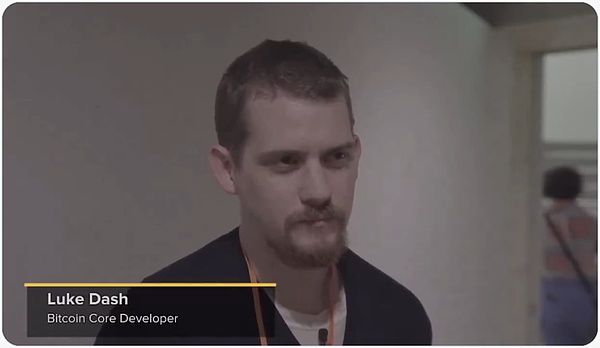
The Luke Dashjr we are going to talk about today was killed by Twitter founder Jack Dorsey Known as the "Guardian Angel" of Bitcoin. He has been involved in the development of Bitcoin since 2010, when Bitcoin was less than 1 US dollar. He has made voluntary contributions to this day and played an important role in several important turning points in the development of Bitcoin. Next, let’s review Luke Dashjr’s Bitcoin journey, compiled by Jiaolian based on the posts of netizen Peter Rizzo.
Luke Dashjr discovered Bitcoin in the IRC chat channel of a New Year's Eve party at the end of 2010. At the time, the price of Bitcoin was around $0.30 (or less).
But just over half a year later, Bitcoin ushered in its first bull market in history. In June 2011, it was recorded that the price of Bitcoin soared from US$0.06 to US$29, an increase of 500 times in one year!
In 2011, Luke Dashjr established the first mining pool in Bitcoin history: Eligius. This mining pool has mined more than 300,000 Bitcoins. Completely free for users!
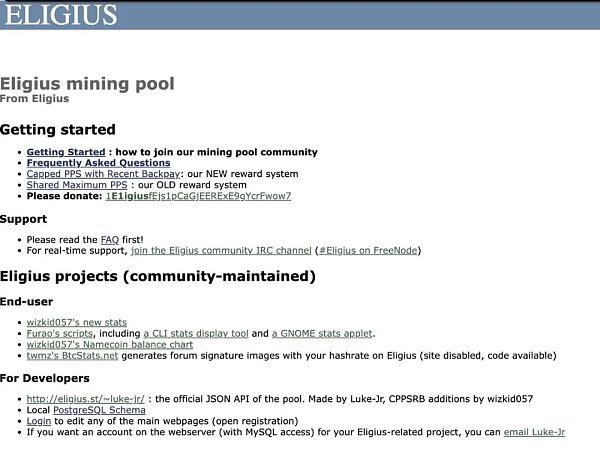
Jiaolian will briefly explain: Bitcoin is generated by providing computing power for mining. Miners can mine alone, or they can connect their computing power to a mining pool. There is greater power in numbers. After mining Bitcoin, it will be distributed according to the contribution of computing power. Generally speaking, mining pools charge some fees. However, the first mining pool established by Luke Dashjr back then was completely public and provided free of charge to anyone who wanted to mine Bitcoin.
In 2012, regarding the P2SH soft fork plan, the plan proposed by Gavin Andresen, the heir to the mantle of Satoshi Nakamoto and the then chief developer of Bitcoin Core, annoyed Luke Dashjr. Luke believes that Andresen’s solution adds complexity to the Bitcoin protocol, which will lead to unpredictable consequences. He launched an opposition campaign. He said, "If you want an imperial currency, why not just use the Fed's dollars?"

Withstanding the pressure from Andresen, Luke decided to implement a solution that competes with P2SH - CHV. During this big debate about the vision of Bitcoin, Andresen once asked Luke to completely stop contributing Bitcoin code, but Luke ignored his pressure and continued to work. Supporters of each plan decided to adopt the P2SH plan through stimulating debate and final voting by computing power. This first "war" in the history of Bitcoin has come to an end.
Although Luke's plan failed to be adopted in the end of this "struggle", it provided valuable practical experience on how the Bitcoin code should evolve and how to choose among different viewpoints and plans. experience.
Since 2011, Luke Dashjr has officially become a BIP editor. He volunteered to examine the BIP proposal and evaluate its impact on Bitcoin.
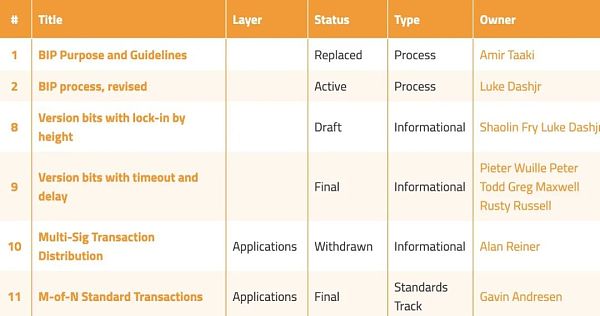
In 2013, Luke Dashjr was the first to discover a hard fork crisis, which may It will cause the Bitcoin network to split. He quickly raised the issue and prevented Bitcoin from taking a heavy hit.

The dispute over "big and small blocks" that lasted for several years from 2015 to 2017 , Luke Dashjr found a way to expand the block size through "Segregated Witness", which is to plug the witness data, that is, the signature data, outside the Satoshi Nakamoto block. This is why today’s Bitcoin can have 4MB block data.
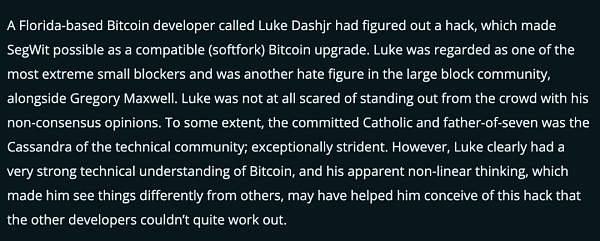
As of 2016, Luke Dashjr is on the list of the top 20 Bitcoin contributors in the world part of. The ranking of this contribution list is entirely based on the code contribution to Bitcoin Core.
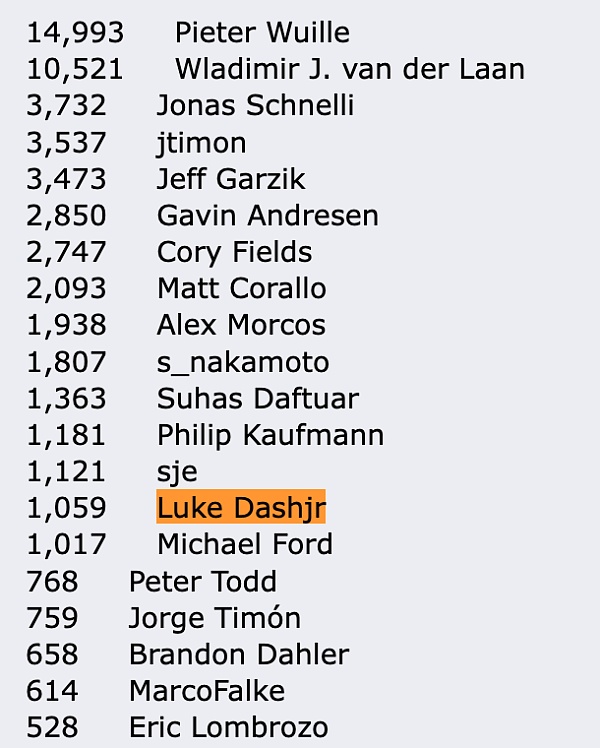
In 2017, the year of the "big block war", Luke Dashjr was the only A Bitcoin Core developer supporting UASF (User Activated Soft Fork). Through the UASF protocol, all nodes can exercise their rights and pass the implementation of Segregated Witness technology.
The successful implementation of UASF proves that it is not commercial institutions or miners, but the vast majority of users that drive the upgrade of consensus.
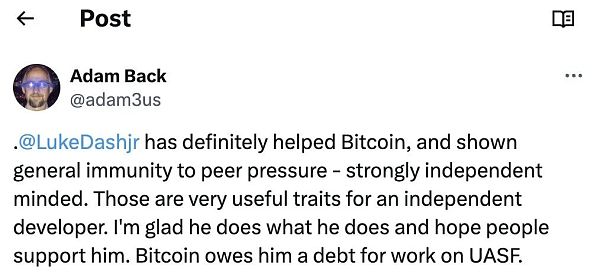
Now, Luke Dashjr has developed the Bitcoin client Bitcoin Knots (https:/ /bitcoinknots.org), as an alternative to Bitcoin Core. What stands out in Knots are the key functions and features that are crucial to network decentralization.
If you don’t want small pictures of inscriptions to fill your precious hard drive, then you can use the Knots client, turn on the filter switch, and “sweep away all the mosquitoes”, and feel refreshed from now on.
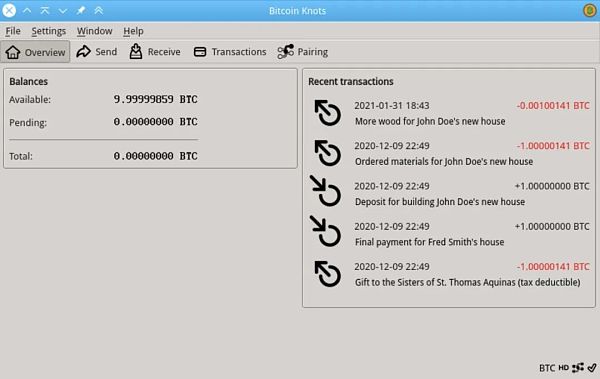
In 2023, Luke Dashjr launched a new mining pool called Ocean Mining (Ocean Mining) and received $7 million in financing.
Ocean Mining minimizes asset custody (risk of mining pool runaways) and achieves decentralized mining by paying Bitcoin directly to miners in block coinbase transactions. (Teacher's note: Traditional mining pools first store the mined BTC in a unified platform and return them to miners regularly. If the mining pool runs away, it is easy to take away the unreleased BTC.)
< p>"If a person does good things for the people, the people will never forget him."
The legendary story of the veteran continues...
< /mp-style-type>
 Cheng Yuan
Cheng Yuan
 Cheng Yuan
Cheng Yuan JinseFinance
JinseFinance JinseFinance
JinseFinance JinseFinance
JinseFinance JinseFinance
JinseFinance JinseFinance
JinseFinance JinseFinance
JinseFinance MarsBit
MarsBit Cointelegraph
Cointelegraph Cointelegraph
Cointelegraph